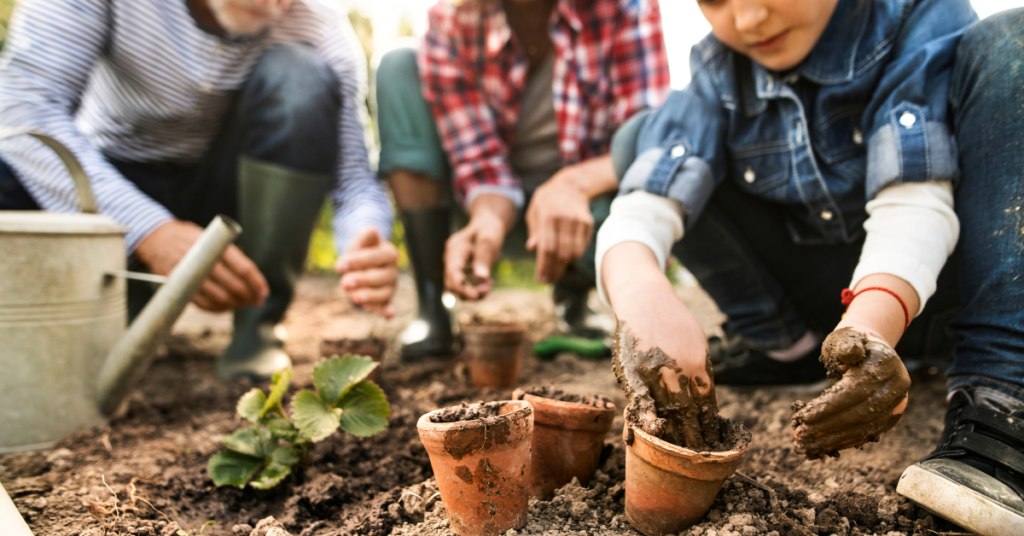
If you’ve ever dreamed of growing your own food and living a more sustainable lifestyle, you’re not alone! There’s something so satisfying about picking fresh veggies and herbs from your own garden—and let’s be real, it’s way more rewarding than running to the grocery store for a tomato. Whether you’re working with a tiny apartment balcony or a spacious backyard, creating a self-sufficient garden is totally doable. And the best part? It’s easier than you might think!
So, if you’re ready to get your hands dirty and dive into the world of self-sufficient gardening, here’s everything you need to know to get started. From planning and tools to handy tips and tricks, I’ve got you covered. Let’s jump right in!
How to Plan Your Self-Sufficient Garden: The Basics
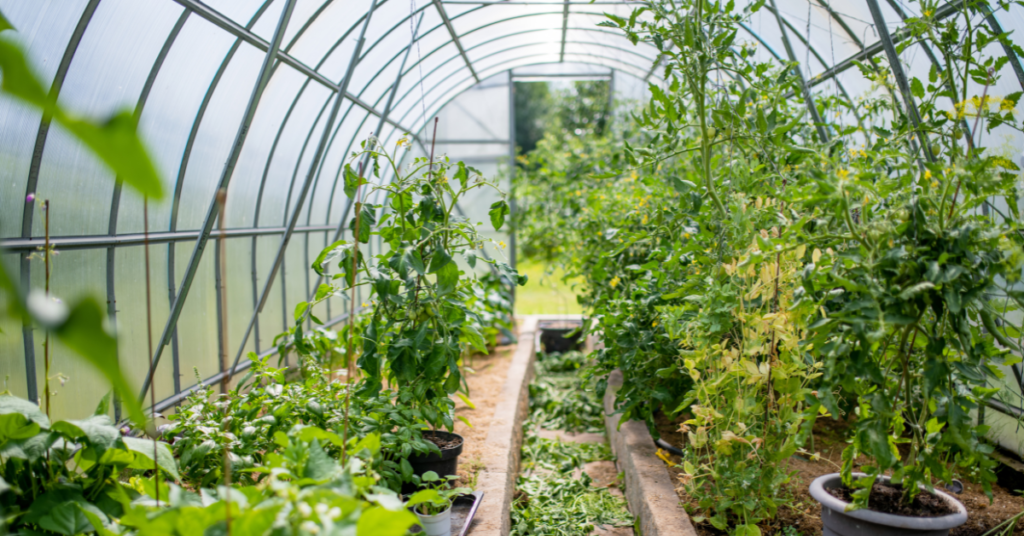
First thing’s first: planning your garden is key. I know it sounds like a lot of work, but trust me, you’ll thank yourself later. The last thing you want is to plant too many crops that don’t even get enough sunlight or don’t match your climate. So let’s break it down!
Pick Your Plants Wisely
For a self-sufficient garden, focus on plants that are easy to grow, produce lots of food, and work well with each other. Consider starting with a mix of veggies, fruits, and herbs that’ll provide you with fresh produce all year long. Here are some great options:
- Veggies: Tomatoes, spinach, kale, beans, and carrots are all pretty beginner-friendly and highly productive.
- Fruits: Blueberries, strawberries, apples, and raspberries are easy to grow and delicious!
- Herbs: Basil, parsley, mint, and thyme are perfect for adding flavor to your meals and they don’t require a lot of space.
- Flowers: Sunflowers, marigolds, and lavender aren’t just pretty—they help attract pollinators like bees, which are essential for a thriving garden.
When you’re planning, keep in mind the sunlight your garden gets. Most plants need at least 6 hours of sunlight a day, so pick the sunniest spot (even if it’s just a sunny windowsill for your herbs). If you’re working with limited space, container gardening or vertical gardening are awesome options to maximize what you’ve got.
Must-Have Gardening Tools and Accessories for a Self-Sufficient Garden
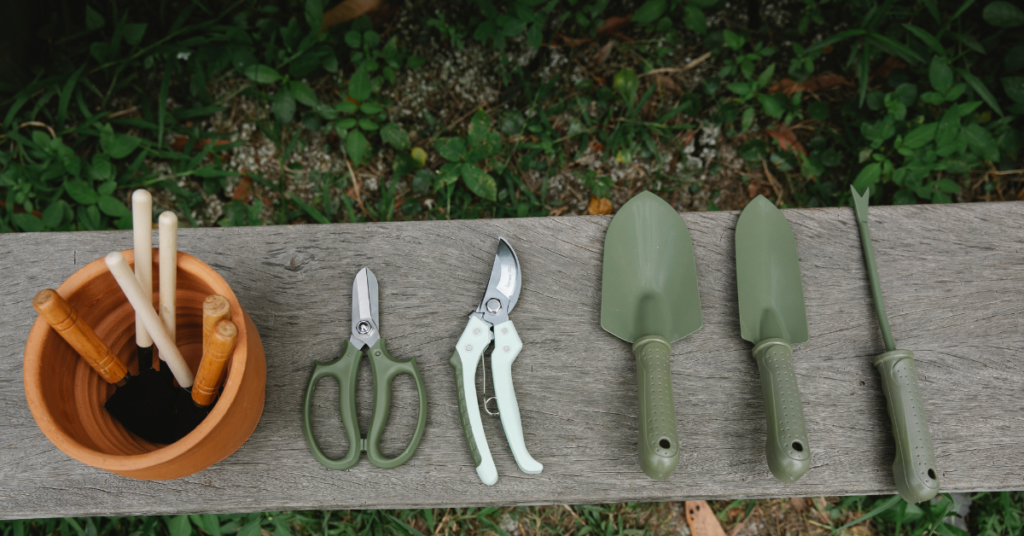
Alright, now that you know what you’re planting, let’s talk tools. While you don’t need to invest in a ton of fancy equipment, there are a few essentials you’ll need to make gardening easier and more enjoyable. Here’s the checklist:
Essential Tools for Your Garden
- Trowel: Perfect for digging, planting, and scooping soil into containers or raised beds.
- Hand Fork: This little tool is great for aerating the soil and loosening compacted earth.
- Pruning Shears: Trim dead leaves and stems to help plants thrive and prevent diseases.
- Garden Hoe: This will help you break up soil and weed the garden.
- Watering Can or Hose: You’ll need to water your plants regularly, so a good watering can or hose with an adjustable nozzle is a must.
- Gloves: Protect your hands from thorns, dirt, and cuts—trust me, your hands will thank you.
Soil, Fertilizer, and Composting Gear
Soil is where it all begins. Whether you’re growing in the ground, containers, or raised beds, good soil is the foundation of a successful garden. You can make your own compost to enrich the soil with organic material. Here’s what you’ll need:
- Compost Bin: This is where you’ll toss kitchen scraps like veggie peels and garden waste. In a few months, you’ll have rich, nutrient-packed compost.
- Mulch: Helps retain moisture, keeps the soil cool, and suppresses weeds. It’s a simple and effective addition to any garden.
- Organic Fertilizers: Natural fertilizers like compost or fish emulsion will give your plants a nutrient boost without the chemicals.
Raised Beds or Containers
If you have poor soil or limited space, consider using raised beds or containers. These are perfect for smaller spaces and allow you to control the soil quality. Plus, they’re great for gardening on patios, balconies, or rooftops.
Step-by-Step Guide to Creating Your Self-Sufficient Garden
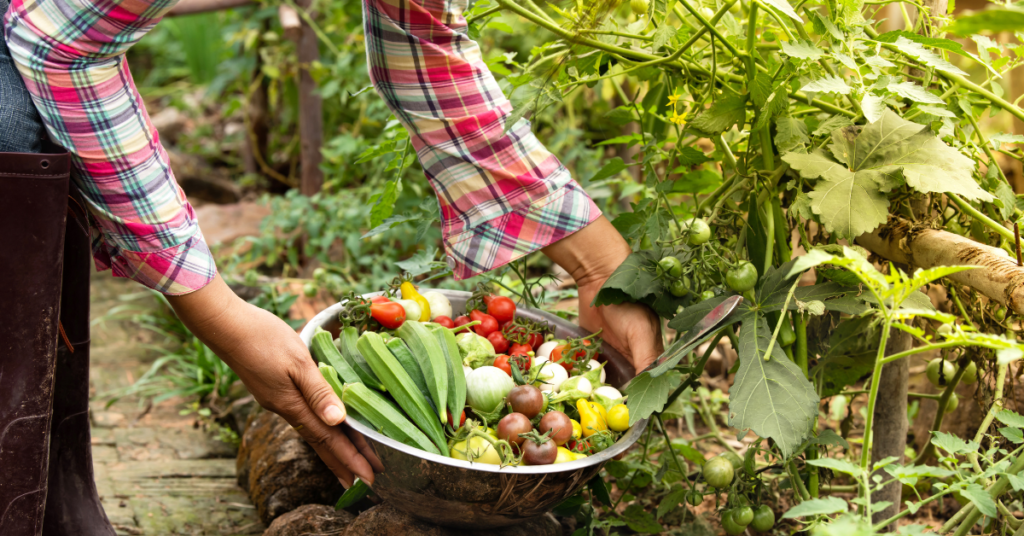
Now for the fun part—getting your garden up and running! Here’s a simple step-by-step guide to help you grow your own food:
Step 1: Prepare Your Soil
Good soil is the backbone of a healthy garden. Test your soil to see if it’s too acidic, too alkaline, or lacking in nutrients. You can get a soil test kit from any garden center or online. Depending on the results, you might need to amend your soil with compost, organic fertilizers, or lime (for acidity).
Step 2: Choose the Right Plants for Your Climate
Know your growing zone and choose plants that thrive in your region. Some crops do better in warm climates (like tomatoes and peppers), while others do better in cooler temps (think kale, spinach, and peas). Check your local planting calendar to know when to plant each type of crop.
Step 3: Watering and Irrigation
Watering your plants correctly is crucial. Aim to water in the early morning or evening when the sun isn’t as hot, as this helps reduce evaporation. If you’re looking for an efficient way to water, consider installing a drip irrigation system—it delivers water directly to the roots and conserves water.
Step 4: Harvesting Your Crops
One of the best parts of having a self-sufficient garden is harvesting your produce. As your plants mature, start harvesting them when they’re at their peak—fresh, ripe veggies and fruits taste so much better than store-bought! For long-term success, try to preserve some of your harvest by canning, freezing, or dehydrating your extra fruits and veggies.
Tips and Tricks for Gardening Success
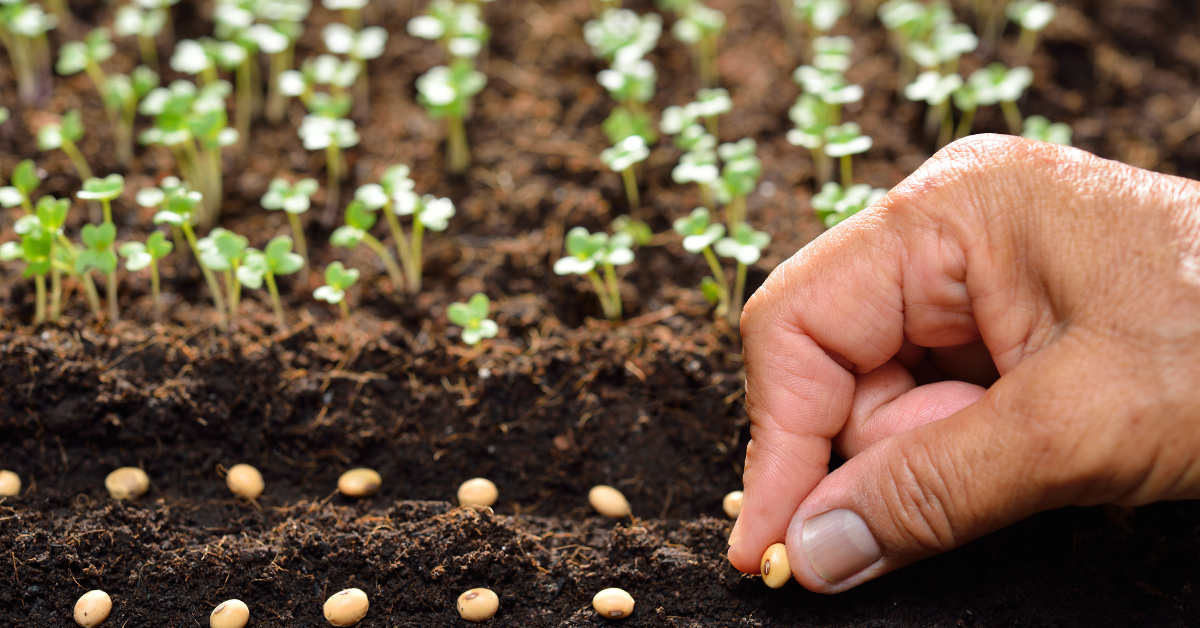
Now that you’ve got the basics down, here are some extra self-sufficient gardening tips to make sure your garden thrives:
Save seeds: Harvest seeds from your best-performing plants and use them for next season—this helps reduce costs and builds resilience in your garden.
Start small: If you’re new to gardening, don’t overdo it. Start with a few plants and build your way up as you get more comfortable.
Companion planting: Some plants work better together! For example, planting marigolds near tomatoes can keep pests away, while beans fix nitrogen in the soil, which benefits other plants.
Crop rotation: Change the location of your crops every season to avoid soil depletion and reduce the risk of pests and diseases.
Get Gardening!
Starting a self-sufficient garden is one of the most rewarding and empowering things you can do. Not only does it give you access to fresh, healthy food, but it also helps you become more sustainable and connected to nature. Take it one step at a time, use the right tools, and keep learning along the way.
If you’re ready to start your own self-sufficient garden, grab your tools, get outside, and start planting! 🌿 There’s no better time to begin than right now.
PS: Just so you know, some of the links on this blog are affiliate links, which means I may earn a small commission if you make a purchase (at no extra cost to you!). But don’t worry—every product or brand that I recommend is something I’ve personally used, loved, and genuinely believe in. I only share products that I trust and think will help make your gardening journey even more fabulous! 🌸
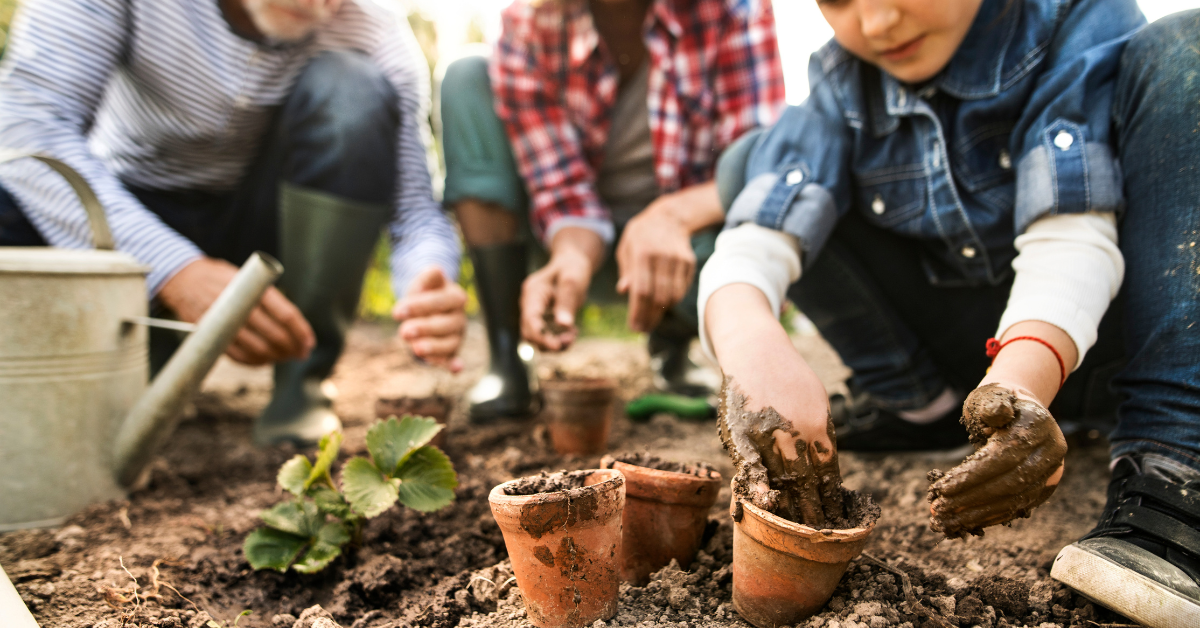
Leave a Reply